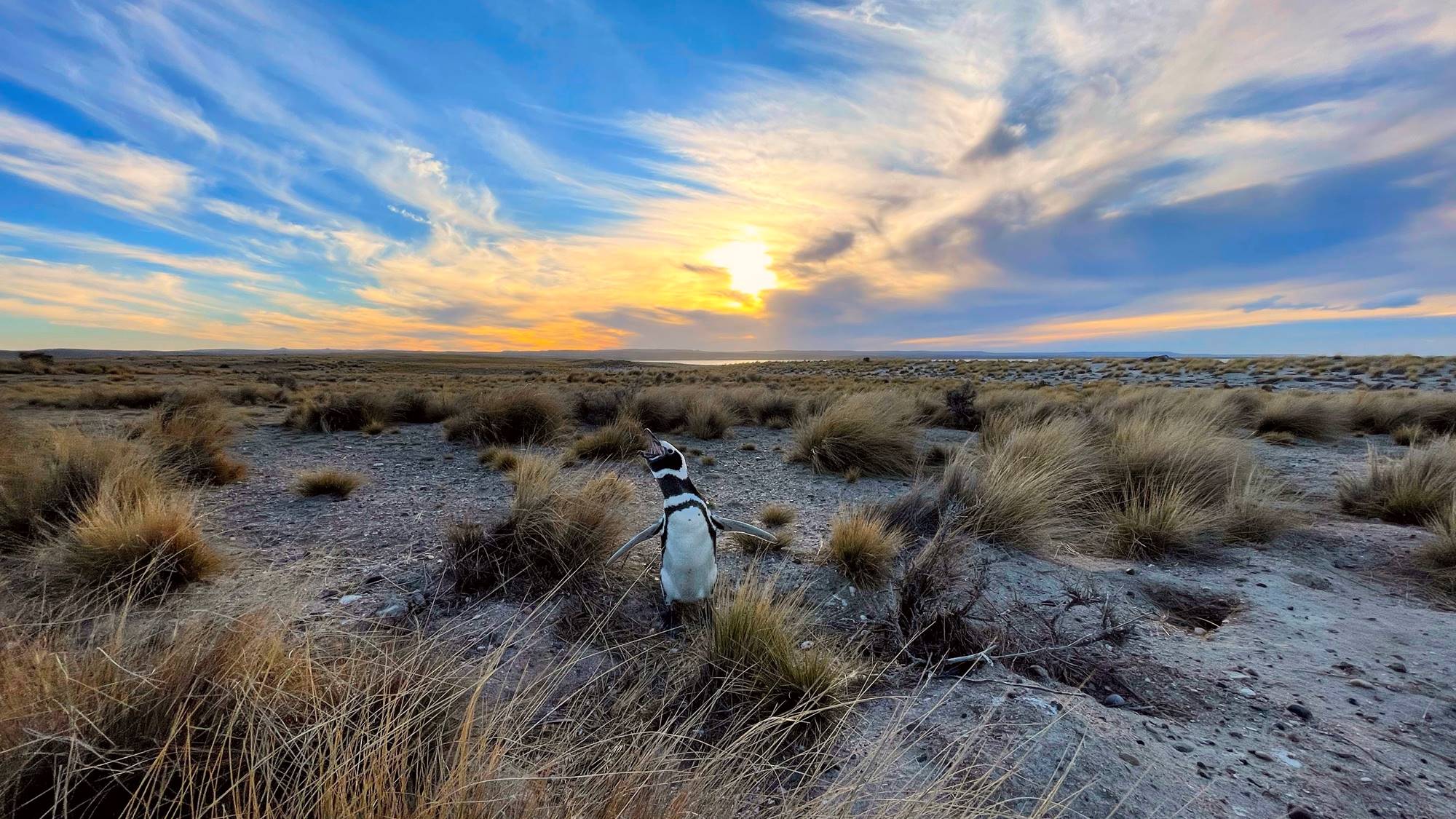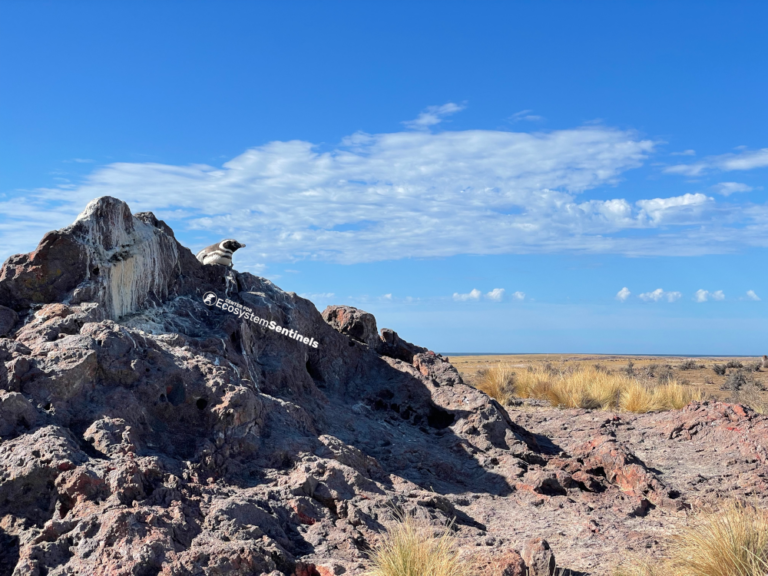Thanks to the generous support of Zoo Augsburg in Germany, Dr. Eric Wagner and Katie Holt were able to return to Punta Tombo for a couple of weeks in April. There, they put twenty satellite tags on penguins—ten females and ten males—that were about to start their post-breeding migration. As of today 18 satellite tags are still transmitting to our live tracking map on our website.
This is the third year we have tracked penguins during migration, and already we have learned vital information about sex-specific patterns and behaviors. Females, for example, tend to stay closer to the coast than males do, potentially making them more vulnerable to nearshore fishing operations or other human activities. Knowing the types of habitats that are important to penguins after they leave the colony will help us better protect them.

An adult Magellanic penguin braying alone in Punta Tombo. Photo credit: Eric Wagner.


